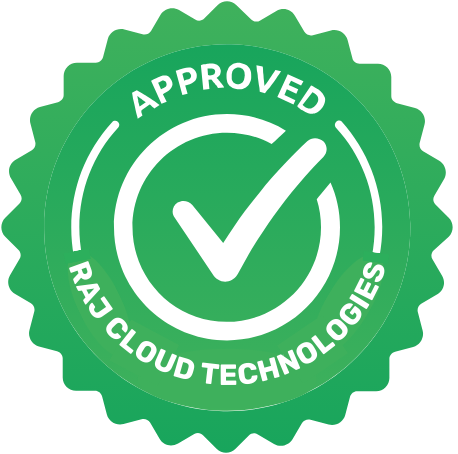Control Structures & Functions
- for loops
- range() , Functions (pre-defined, user defined) expressions
Week 2: Python Libraries and Fundamentals in Machine Learning – Part 1
Python Libraries
- NumPy arrays and vectorized operations
- Pandas and with exploring a dataset
- Matplotlib basic plotting
- Real-world EDA practice
ML Pipeline Overview
- ML lifecycle and workflow
- Supervised vs. Unsupervised learning
Regression Algorithms
- What is meant by Model
- Linear Regression (Simple & Multiple)
- Regression evaluation metrics (MSE, RMSE, R^2)
- Hands-on: Predicting house prices
Classification Algorithms
- Logistic Regression fundamentals
- Classification use cases (e.g., cancer detection)
- Hands-on with sklearn models
Model Evaluation Techniques
- Confusion Matrix
- Accuracy score
Week 3: Advanced Machine Learning – Part 2
Feature Engineering
- One-hot and Label Encoding
- Feature Scaling: Standard vs MinMax
Data partition:
Tree-Based Models
- Decision Tree algorithm
- Splitting Criteria: Gini vs Entropy
- Overfitting and pruning techniques
- Bagging and Random Forest ensemble learning
Unsupervised Learning
- K-Means Clustering: Elbow Method
- Distance metrics: Euclidean
- Applications of clustering in real-world problems
- Hands-on clustering mini project
- Feature selection techniques
# ASSIGNING A PROJECT TO WORK ON MACHINE LEARNING APPLICATIONS
Week 4: Fundamentals in Natural Language Processing – Part 1
Introduction to NLP
- NLP pipeline overview
- Applications: chatbots, sentiment analysis, etc.
- Challenges of NLP
- Text encoding techniques overview
- Introduction to nltk
Text Cleaning & Tokenization
- Removing punctuation, numbers, stop words
- Lemmatization vs Stemming
- Tokenization using nltk
- Case study: cleaning feedbacks data
Text Vectorization
- Bag of Words (BoW)
- TF-IDF implementation
- Sparse matrix representation
- Visualization with word clouds
Text Classification
- Sentiment Analysis
- End-to-end NLP pipeline using Scikit-learn
- Dataset splitting and vectorization
- Training Logistic Regression
# ASSIGNING A PROJECT TO WORK ON NLP BASED MACHINE LEARNING APPLICATION
Week 5: Fundamentals in Deep Learning – Part 1
Neural Networks Fundamentals
- Perceptron model and activation functions
- Feedforward NN architecture
- Forward and backward propagation
- Loss functions: MSE, Cross-Entropy
- Model intuition with simple examples
Training Deep Models
- Epochs, Batches, and Batch Size
- Optimizers: SGD, Adam
- Hands-on: Build a basic NN using Keras
Keras/TensorFlow Practice
- TensorFlow/Keras basics
- Model.compile(), .fit(), .evaluate()
- Evaluate performance on test data
- Case Study: Improve model performance
# ASSIGNING A PROJECT TO WORK ON ANN
Week 6: Advanced in Natural Language Processing – Part 2
Word Embeddings
- Word2Vec: Skip-gram & CBOW
- Visualizing word vectors
- Hands-on: Pre-trained embeddings usage
Sequence Models and RNN Basics
- Sequential data and temporal relationships
- Introduction to RNNs and limitations
- Tokenizing and padding sequences
- Preparing text data for DL
- Keras Embedding layer overview
NLP Capstone Project
- Select a domain-specific problem (e.g., reviews, healthcare)
- Dataset analysis and cleaning
- Model selection and evaluation
- Presenting the outcome
- Review and feedback
# NLP Case Study: Embeddings → RNN Sequence Models
Week 7: Advanced in Deep Learning – Part 2
CNNs for Image Classification
- Convolution and pooling operations
- CNN architecture and feature extraction
- Activation maps
- Building CNNs with Keras
- MNIST image classification project
Transfer Learning
- Concept of Transfer Learning
- Pre-trained models: VGG16, ResNet50
- Feature extraction vs Fine-tuning
- Load, modify and evaluate pre-trained models
- Image classification case study
# ASSIGNING A PROJECT TO WORK ON CONVOLUTIONAL NEURAL NETWORKS(CNN)
Week 8: Advanced AI – Part 2
Transformers & Hugging Face
- Introduction to transformers
- Pretrained models: BERT, GPT
- Hugging Face installation & usage
- Text classification pipeline with Transformers
- Fine-tuning basics
DL with NLP (Transformers)
- Transformer architecture recap
- BERT for sequence classification
- Tokenizer and model pipeline
- Evaluate model performance
- NLP fine-tuning best practices
Deep Learning Capstone Project
- Choose between NLP or Image-based project
- Define objective and strategy
- Model training and validation
# ASSIGNING A PROJECT TO WORK ON (NLP + DL)
Career Designations You Can Aim For:
After completing this program, you’ll be equipped to pursue exciting roles such as:
• Machine Learning Engineer
• Data Scientist
• AI Engineer
• NLP Engineer
• Computer Vision Engineer
• Data Analyst with AI Expertise
• AI Product Consultant / AI Research Associate
These roles span across sectors like IT, healthcare, finance, e-commerce, manufacturing, and even education.


